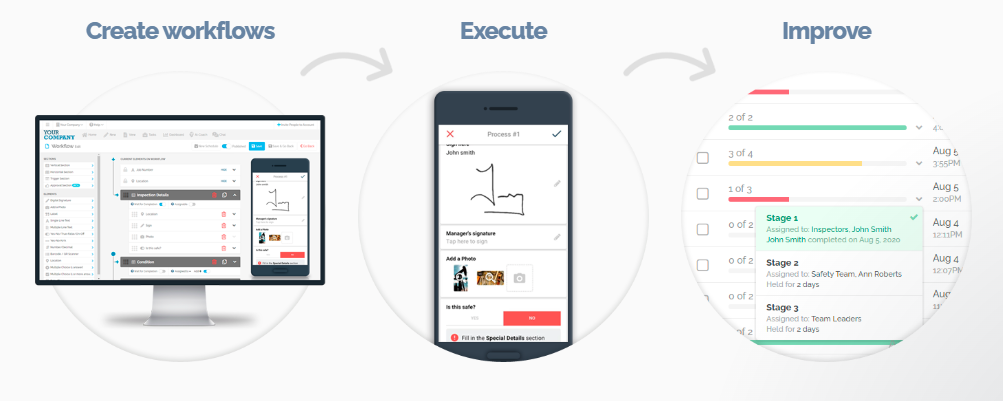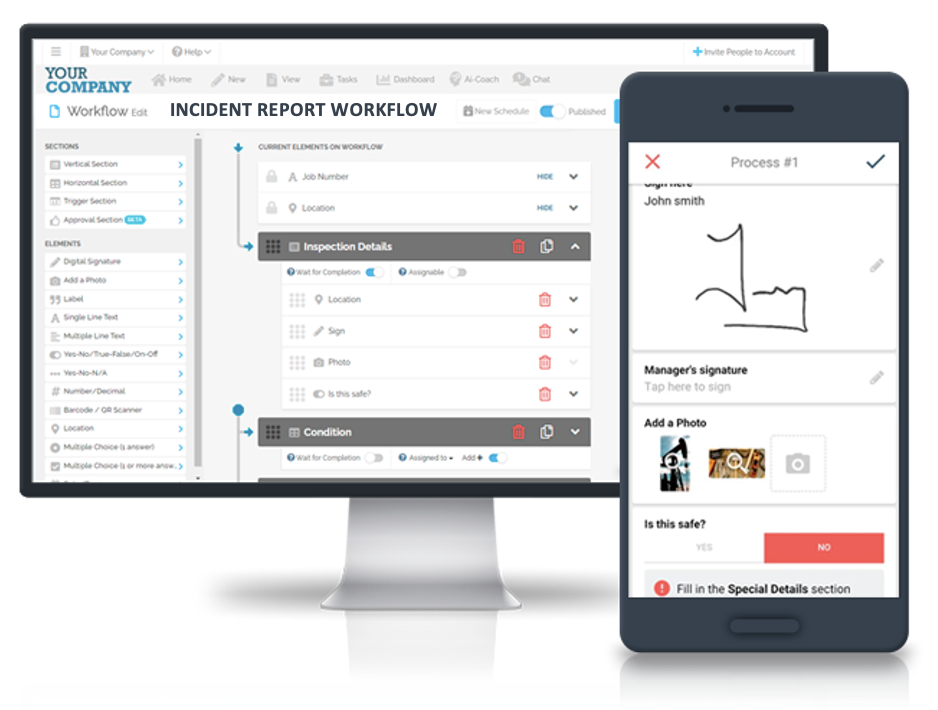Incident Reporting systems are crucial tools for organizations to maintain safety, compliance, and operational excellence. One such system that stands out in the market is FAT FINGER. FAT FINGER is a digital workflow procedure builder that empowers frontline teams to do their work correctly every time. It allows users to build checklists, workflows, and digital procedures that unlock operational excellence.
FAT FINGER’s digital incident reporting system allows users to file incident reports electronically, track who has accessed the report and when, and store them in a secure location. This article will explore the key features that every incident reporting system, like FAT FINGER, must have. Schedule a demo to see how FAT FINGER can revolutionize your incident reporting process.
1. User-Friendly Interface
A user-friendly interface is a must-have feature for any incident reporting system. The system should be easy to navigate, with clear instructions and intuitive design. FAT FINGER, for example, offers a drag-and-drop workflow builder that simplifies the process of creating and managing workflows.

2. Mobile and Desktop Workflows
Incident reporting systems should be accessible on both mobile and desktop devices. This ensures that reports can be filed by anyone, anywhere, at any time. FAT FINGER offers mobile and desktop workflows, making it easy for users to file reports, whether they’re in the office or on the go.
3. Dashboards

Dashboards provide a visual representation of data, making it easier to understand and analyze. They can show trends, highlight areas of concern, and provide actionable insights. FAT FINGER’s dashboards offer a clear overview of all incident reports, helping you to monitor and manage incidents effectively.
4. Integrations
Integration with other systems is another key feature of an effective incident reporting system. This allows for seamless data sharing and collaboration. FAT FINGER integrates with various systems, ensuring that your incident reports are always up-to-date and accurate.
5. Augmented Reality and IoT Devices
Modern incident reporting systems should leverage the latest technology, such as augmented reality and IoT devices. FAT FINGER’s system allows for the connection of IoT devices, providing real-time data and insights. Its augmented reality feature enhances the user experience, making it easier to visualize and understand data.
6. Artificial Intelligence Coaching
Artificial intelligence (AI) can provide valuable insights and recommendations, helping to improve safety and prevent incidents. FAT FINGER’s AI coaching feature provides guidance and support, helping users to make informed decisions and take appropriate action.
Conclusion
In conclusion, a good incident reporting system should be user-friendly, accessible on both mobile and desktop devices, offer dashboards for data visualization, integrate with other systems, leverage the latest technology, and provide AI coaching. FAT FINGER ticks all these boxes, making it an excellent choice for any organization looking to improve their incident reporting process.
Build your incident report workflow for free with FAT FINGER or schedule a demo to see how it can revolutionize your incident reporting process.
Discover the key features every incident reporting system must have to ensure efficiency and accuracy in your organization. Learn how these features can streamline your processes, improve response times, and enhance overall safety. Don’t miss out on this opportunity to upgrade your incident reporting system.


